Clarisa Naa Shormeh Darko: There Is a Potential for the Utilization of Edible Seaweed in Mainstream African Foods
Clarisa Naa Shormeh Darko began her PhD studies at Tallinn University three years ago, under the supervision of Prof. Rando Tuvikene and Prof. Neill J. Goosen (Stellenbosch University, Republic of South Africa). Her studies are partially funded by the Estonian Ministry of Foreign Affairs.
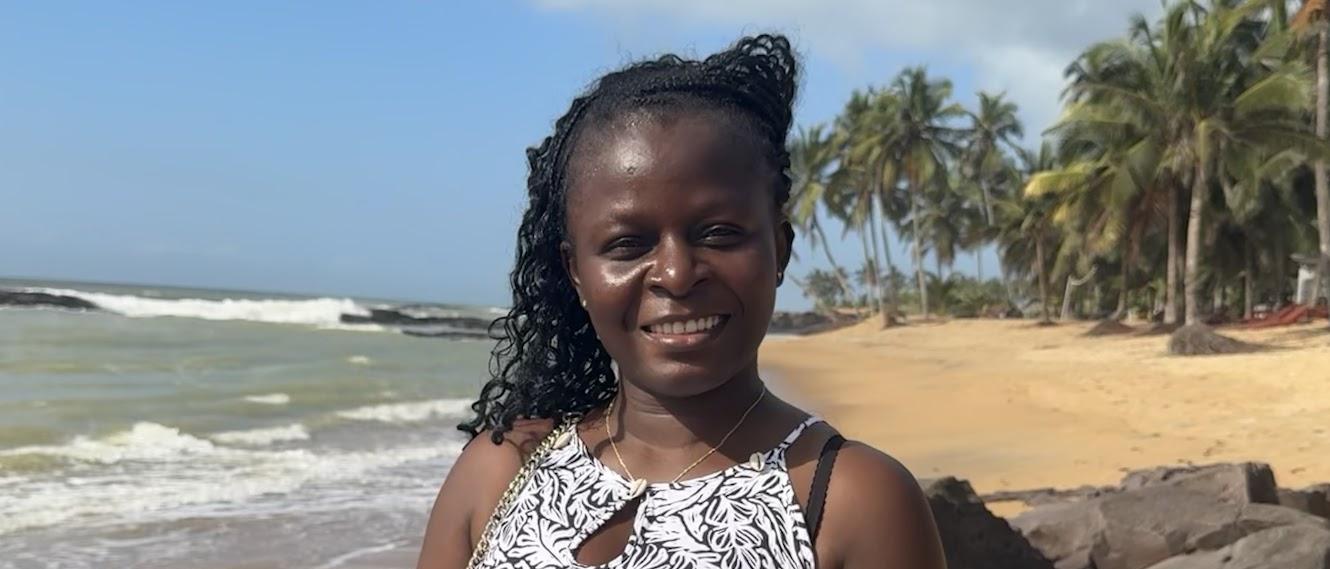
Who are you and what is your position here at the university?
I am Clarisa Naa Shormeh Darko, a Ghanaian who is currently pursuing her PhD degree in Complex Systems in Natural Science, specializing in Functional Biomolecules and Systems at the School of Natural Sciences and Health, Tallinn University.
What is your research about, and what is the focus of your work?
My research topic in simple terms, is focused on valorizing seaweeds that are commonly found along the coastlines of Africa. The whole idea of the research is basically, to investigate different pathways through which African-sourced seaweeds can be processed into value-added products, specifically for food, pharmaceuticals, and the newly emerged nutraceutical products. As seaweeds generally contain a plethora of chemical metabolites such as proteins, polysaccharides, vitamins and minerals which are highly influenced by the species, geography and season of collection, the study has adapted a systematic procedure for isolating their main constituent which is the polysaccharide component also commonly referred to as phycocolloids. So far, I have investigated samples under all three classes of seaweeds (red, brown and green algae) collected from the Western and Southern coasts of Africa. Some of these species have already shown promising bioactive properties signifying their potential applicability in the nutraceutical sector. Through my research, I hope to contribute to increasing the awareness of seaweeds as the valuable resources that they are whilst providing efficient solutions to their associated socio-economic challenges across Africa.
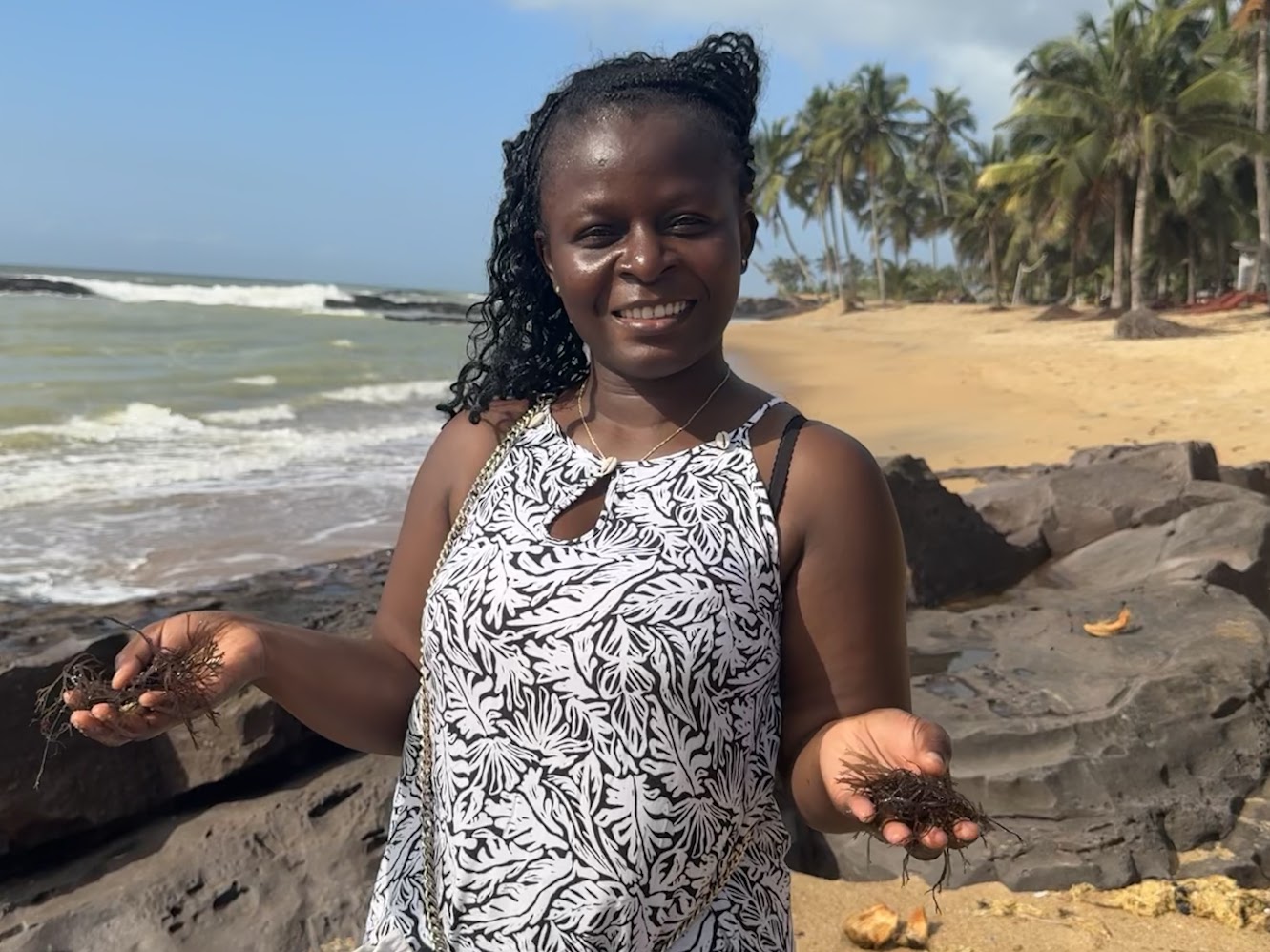
How did you end up choosing your current research topic? What did you focus on back in Ghana?
Interestingly, my seaweed research journey only began during the second year of my Masters study. It was during this period that I was tasked to investigate clean and green sources of energy specifically for domestic applications. Prior to my Master's in Philosophy degree, my area of research was more geared toward the use of electrically conductive polymers in organic solar cells. Both my Bachelor's and MPhil. degrees in Materials Science and Engineering were obtained from the University of Ghana. However, I was exposed to the possibility of using seaweeds for generating bioenergy such as biogas during my research mobility at Stellenbosch University in South Africa. It was after this that my interest in seaweeds heightened and I decided to explore other applications of this resource as I got to know it was already well-integrated in the food sector in other parts of the world. From this realization, I decided to proceed with my doctoral research in this area and it was during this period that I came across a PhD opening for my current research at the School of Natural Sciences and Health, Tallinn University.
You’ve also interned in South Africa. How did you get there, and what were you doing there?
Yes, I had the opportunity to study as a mobility research student during the second year of my Master’s program at the Chemical Engineering Department of Stellenbosch University in South Africa. This was a fully funded program under the TRECCAFRICA theme with support from the European Union. During my stay in South Africa, my sole objective was to investigate ways of improving the quality of biomethane in biogas generated from a South African endemic brown seaweed. The study yielded some interesting findings which were published in 2022 in the Waste and Biomass Valorization Journal, Springer. This experience was my first exposure to the seaweed research field and thankfully provided me with valuable insights on the several valorization alternatives of seaweeds which somewhat served as the basic understanding I needed for my next research level.
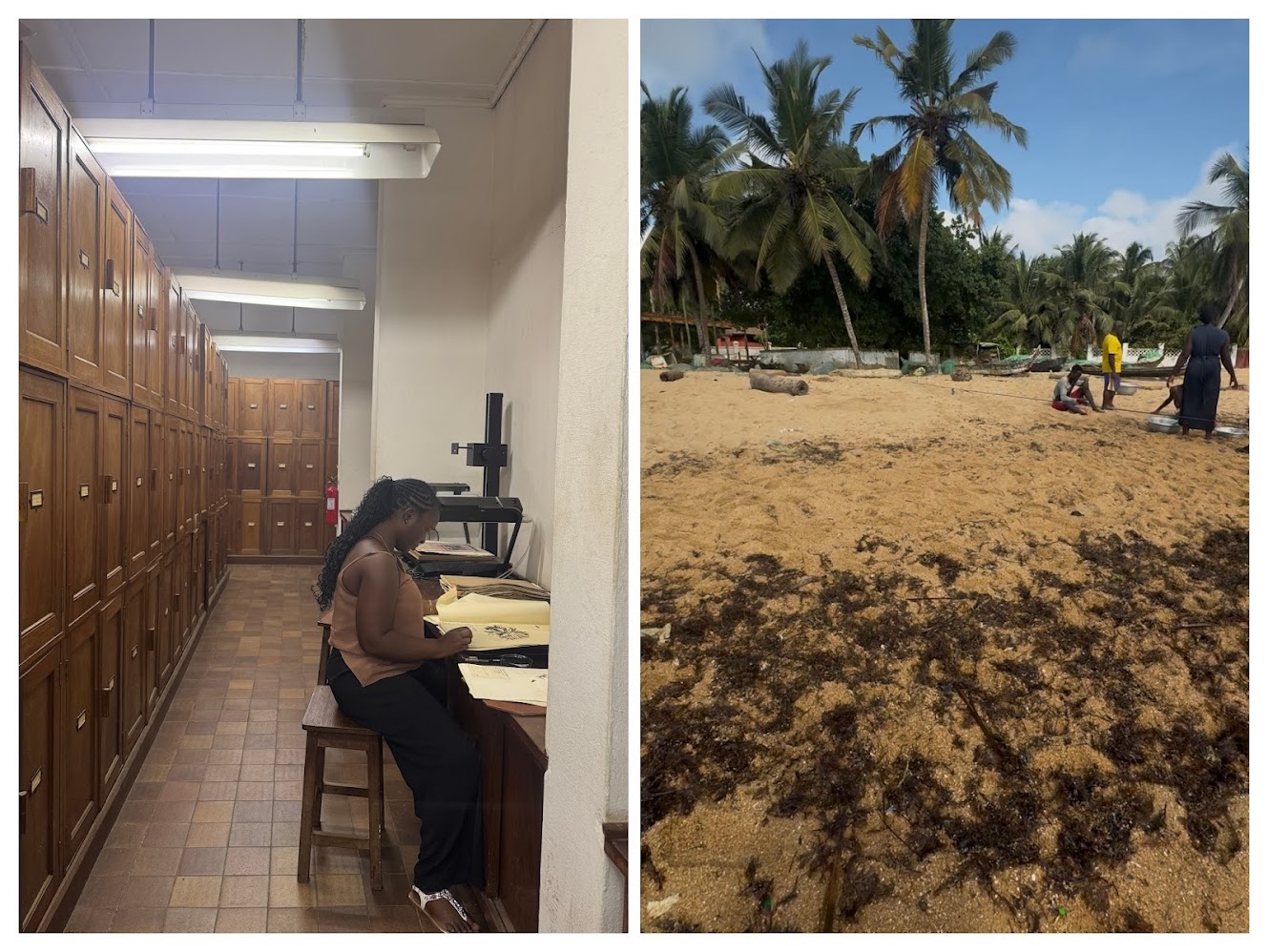
You’ve lived in Estonia for three years now. What’s the main difference in life here compared to Ghana? How well have you adapted?
The past three years have so far been the longest I have stayed abroad away from the warm and tropical climate of my home country, Ghana. There indeed are several notable differences in life in Estonia compared to Ghana. Aside from the most evident differences in the climate zones and language, an overall difference in advanced digitalization, public transportation, infrastructure and high standard of living is very obvious to me. In all of these parameters, Estonia outperforms Ghana which is still developing in many aspects. As far as I have adapted, I would say that I have adjusted quite well and Estonia has gradually grown on me despite the long cold and dark winters.
What do you miss most from home? How do you try to compensate that here?
Just like many other international students abroad, I do miss the family back home and of course, the local Ghanaian delicacies as well. I get to speak with my family on the phone quite often and that is ok for me. I am also surrounded by very nice colleagues and friends who make me feel at home away from home. Thankfully, there also are some African shops in Tallinn so I get to make some local African meals when I please.
How does the work culture and learning environment at universities here compare to that in Ghana?
Having experienced the research and academic environment in both Ghana and Estonia, one difference that stands out to me is the high-level experiential learning that students are exposed to in Estonian Universities even at early academic levels. This means easy access to laboratory facilities, funding opportunities, collaborations and even scientific journals. However, I find the culture of inculcating both independent thinking and collaborative skills in students to be similar across higher institutions in these two countries.
What can Estonians learn from Ghana or other African countries in terms of utilizing their natural resources, for sustainable development?
I would say the deep-rooted traditional analogies that most African countries like Ghana have abided by and this somehow facilitates harmony with nature. Typical scenarios are the popular ‘Ubuntu’ in South Africa and the common saying in Ghana that goes “It takes a whole village or community to raise a child”. These simply teach that the progress of social structures and to a larger extent, both human and other natural resources require collective efforts. Such as these beliefs ensure a supportive community while constructively criticizing individual actions toward a sustainable lifestyle.
What is your current research project?
Currently, I am working on a project titled “Polysaccharide Based Biomaterials: Synergistic Combinations and Enhanced Functionalities”. For this, I am more focused on exploring the behavior or interaction of polysaccharides from seaweeds with other food-applicable substances. The idea is to have an in-depth understanding of how these polysaccharides would behave under different food or pharmaceutical processing conditions being it in oil or protein-based products.
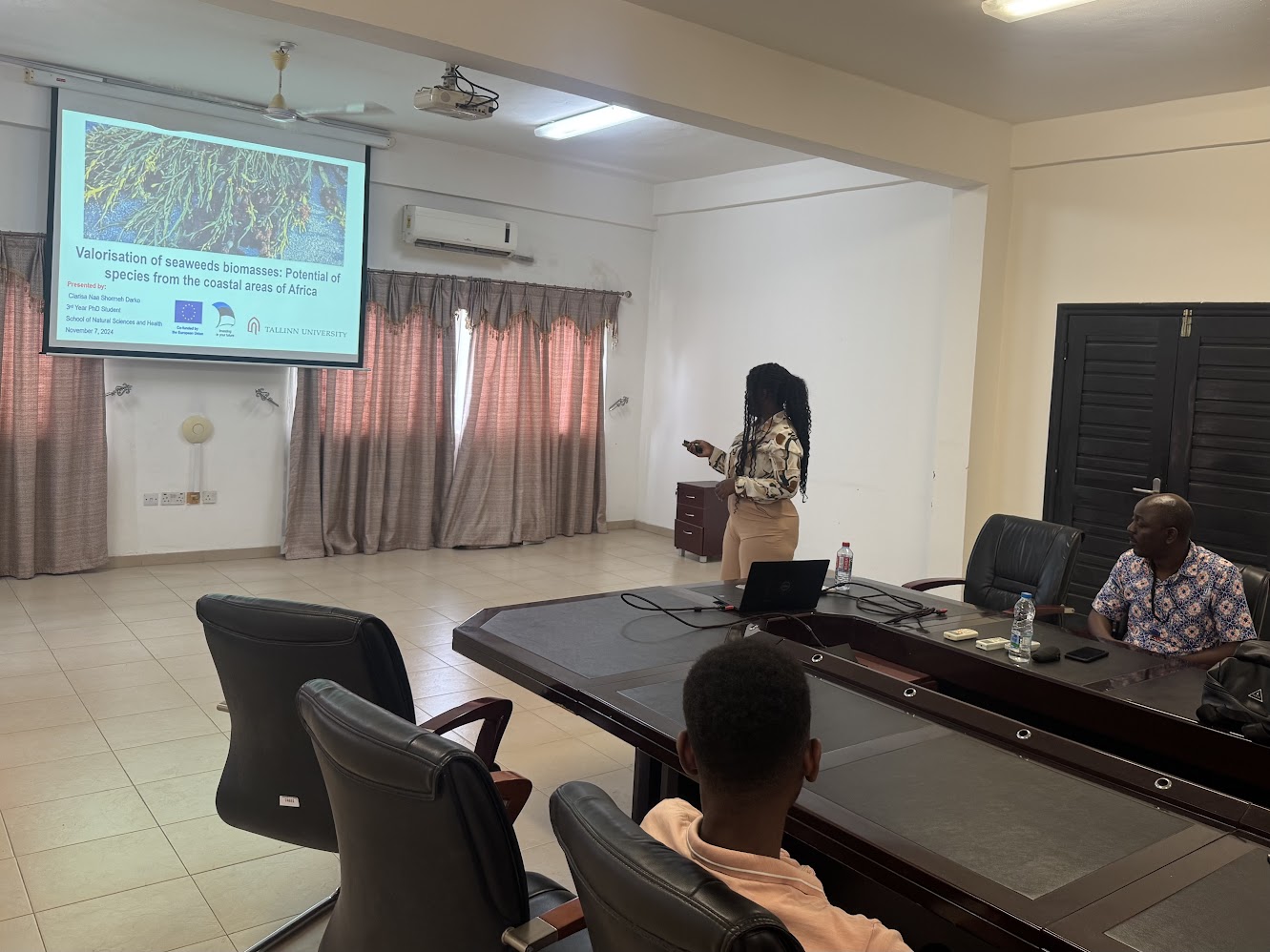
You recently published an article in the high-impact scientific journal Food Chemistry. Could you tell us more about that?
My recent publication with the Food Chemistry journal is a review article that highlights the current status of the seaweed industry across Africa with specific focus on their use as both raw and processed foods. This review details the economically viable species in the regions of Africa and further suggests potential ways to incorporate seaweeds into local food products. Additionally, some challenges that hinder the up-scaling of the seaweed industry in Africa were addressed with some mitigation actions also suggested. I am hoping that this review will provide some basic understanding of the benefits of seaweeds, particularly those commonly found across Africa, and also understand the local consumer needs for full incorporation.
What is the current state of seaweed applications in Ghana and Africa in general?
Unfortunately, the state of seaweed applications not just in Ghana but across Africa is still lagging behind. Only a couple of African countries like Tanzania, South Africa, Morocco and Madagascar have been acknowledged at the global level. Even with this, the local applications of seaweed on a commercial scale are currently just a small fraction of the continent’s potential.
Do you foresee any significant changes in the seaweed sector in Africa in the near future?
I definitely am hopeful for progress and growth in the African seaweed sector even though I foresee it might take a long while to reach the level of the leading seaweed-focused countries in Asia. However, I am of the view that the realization of these changes, is regardless very achievable but shall require collaborative efforts by both national-level government and local organizations at least in my home country, Ghana.
How do you see the potential for seaweed in sustainable development in Africa?
Their use in agriculture as biofertilizers and as feed for livestock which is already common in some parts of Africa has reduced the overdependence on chemical fertilizers and overgrazing in these areas. Moreover, I think there is also a potential for the utilization of edible seaweed in mainstream African foods as vegetables and even as nutritional supplements. The bioenergy aspect of seaweed either as biogas or biochar, I believe also has a potential on the continent and is similarly worth exploring.
Why do you think seaweed usage is not as widespread in Africa as it is in Asia?
The main limitation I can point out is the overall low acceptance or awareness of seaweed as an edible and nutritious food option across Africa. In some regions, it has been recognized as a medicinal substance for ages and has remained so to date. For this, there is the need to first sensitize the populace on the benefits of edible seaweeds and as well their associated health benefits.
You recently went to Ghana to collect seaweed samples for your research. Could you tell us more about that trip? What was its purpose?
This recent trip to Ghana was partially funded by the Estonian Doctoral School mobility grant and also by my school, SNSH. The objective of this trip was to partake in an on-site sample collection and identification of species from various beaches along the southern coasts of Ghana. Some other key activities were interacting with the local coastal residents and tertiary students on the subject of seaweeds and their usefulness.
Could you share an interesting experience from that trip? Did something unexpected happen?
The experience I would like to share is a rather funny and heartbreaking one at the same time for me. While collecting some seaweed samples along the beach, I noticed awkward stares from passers-by, and about then, a couple of gentlemen approached me only to confirm my mental sanity as they were wondering why a lady like I am would be collecting such “waste” materials. This brought me to the realization that the awareness of the potential of seaweed still lags in several parts of Ghana.
What are some of the main challenges you face when working with seaweed in your research?
Collecting high-profile seaweeds and species identification are some of the challenges I have faced over the past years. Most seaweeds are morphologically identical and therefore require experts to avoid misidentification and to ensure the accuracy of research findings. Fortunately, I have managed to have my recent seaweed samples accurately identified by experts at the National Herbarium at the University of Ghana.
Have you encountered any surprising findings or results during your research?
Yes, one of those unexpected discoveries is related to this seaweed sample, which although utilized in South Africa for its polysaccharides, findings from studying the polysaccharide from this species revealed that it has a potential for controlling type 2 diabetes. In the near future, further investigations shall be conducted to confirm its use as a natural remedy.
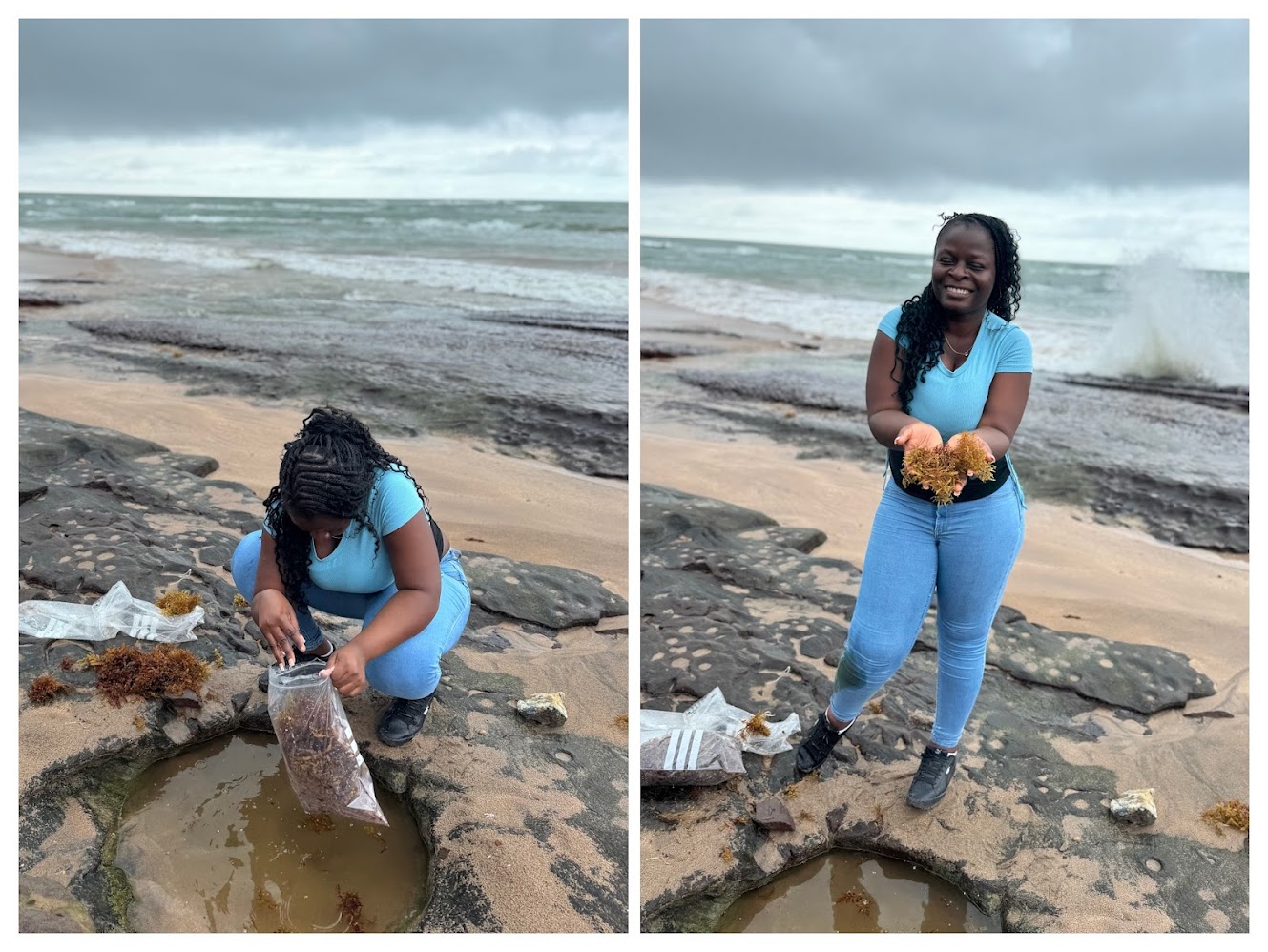
What do you hope to achieve with your research? What is your long-term goal?
My goal since commencing this research journey has remained to gather the training and the expertise needed to make a positive impact on the effective utilization of seaweed in the food and nutraceutical sectors. So by the end of this level of my research career, I hope to have obtained an in-depth understanding of various possible mechanisms that would allow a synergistic application of seaweed and its constituents in the stated areas. The long-term goal I have set for myself will be to establish a research-intensive seaweed processing facility back home in Africa. This I see to be a big dream and the realization of this would require not only the knowledge but also strong local and international collaborations.
What advice would you give to other students or researchers interested in studying seaweed or marine resources?
My advice to anyone interested in studying in the area of seaweed or marine resources would be to keep their curiosity alive as this is a still-evolving subject with several untapped possibilities and discoveries that are yet to be revealed.
Would you recommend TLU to your friends, why or why not?
Surely, I would recommend TLU to anyone who is excited about dynamic and interdisciplinary research. Should your area of interest be in Natural Sciences and Health, then you should consider enrolling at the School of Natural Sciences and Health. I say this because I have experienced first-hand the all-inclusive education offered here at TLU and I am confident this would benefit a lot more researchers and students.